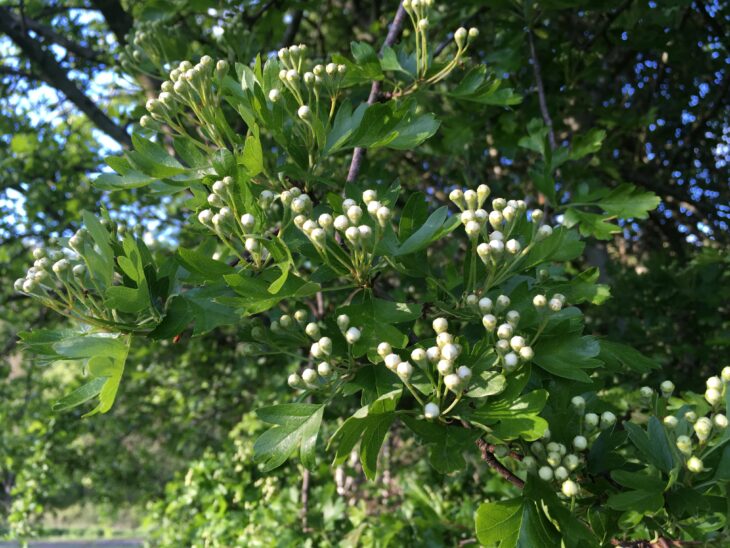The Mayflower
,
“Ne’er cast a cloot til May is oot…” I can still mind my old Grandad saying this to me on a spring morning when I was little as I tried to leave my winter jacket behind before going a walk. My Granda used the phrase to mean the month, and he stuck religiously by it, keeping his jumper on long after I was out getting sunburn (or frostbite). In fact the old saying probably doesn’t refer to the month of May but instead the flowers of the Hawthorn tree – which had the old common name ‘Mayflower’.
Past farming communities didn’t have much time for months – they were more concerned with Spring, Harvest and Winter – but they definitely knew when every flower came into season and what that meant. The recent cold snap (it was snowing last week!) shows why the old wisdom holds true. Don’t trust the weather until you see the glorious clouds of white flowers on the hawthorn hedges that line the fields!
The hawthorn was a valuable plant, its spikes keeping livestock in (and trespassers out) of fields and its young leaves, flowers and berries are all edible. It was traditionally used in folk medicine and modern doctors still use extracts from it to help heart conditions. The Fairy Queen was believed to live within it and it was very bad luck to cut one down – which might have something to do with the smell of its decaying flowers, which are said to smell of death!
If we hold our noses though Hawthorn bushes are a beautiful and valuable plant, you can find them all over Cumbernauld, often lining the edges of paths, and you can still find a few of the old hedges that once lined the fields before the town was built.

